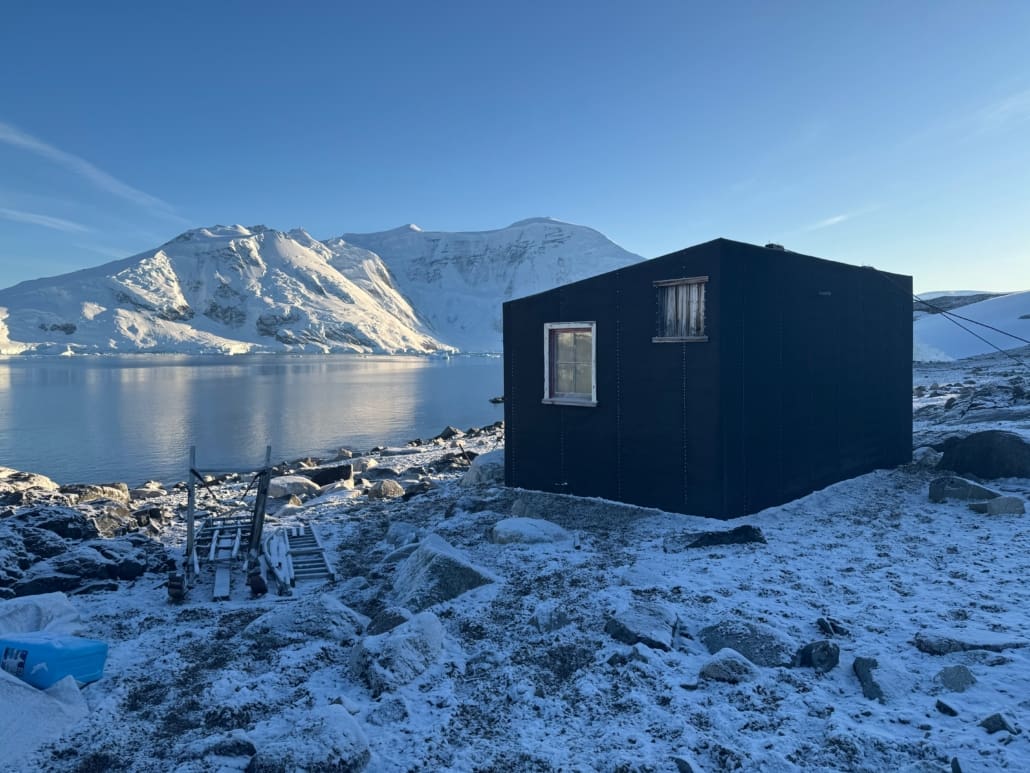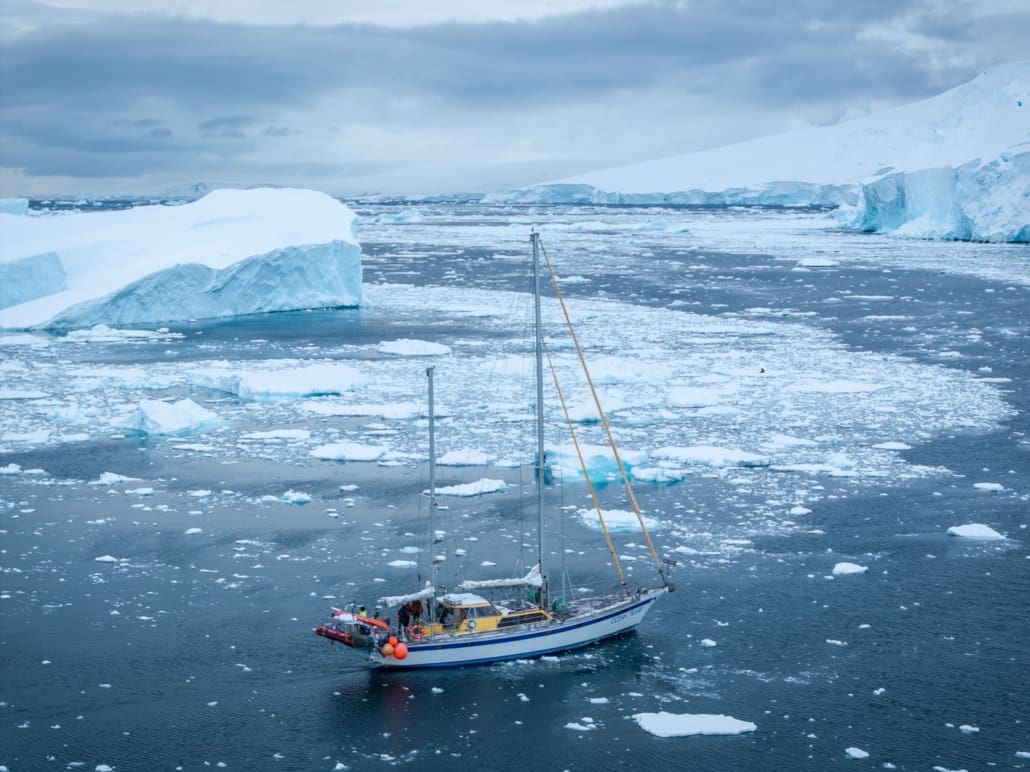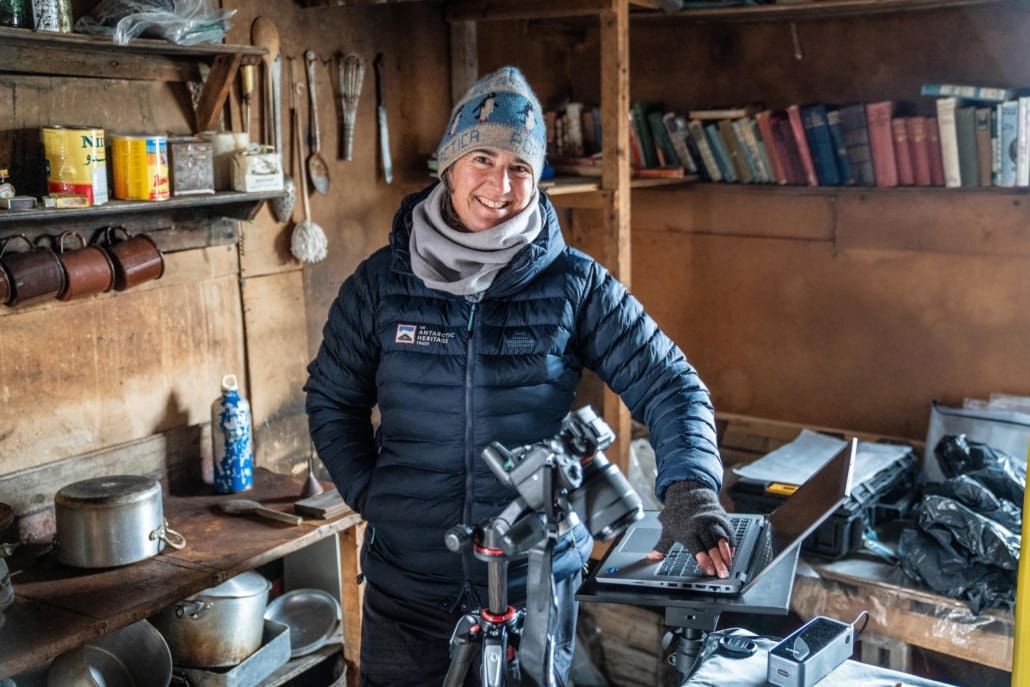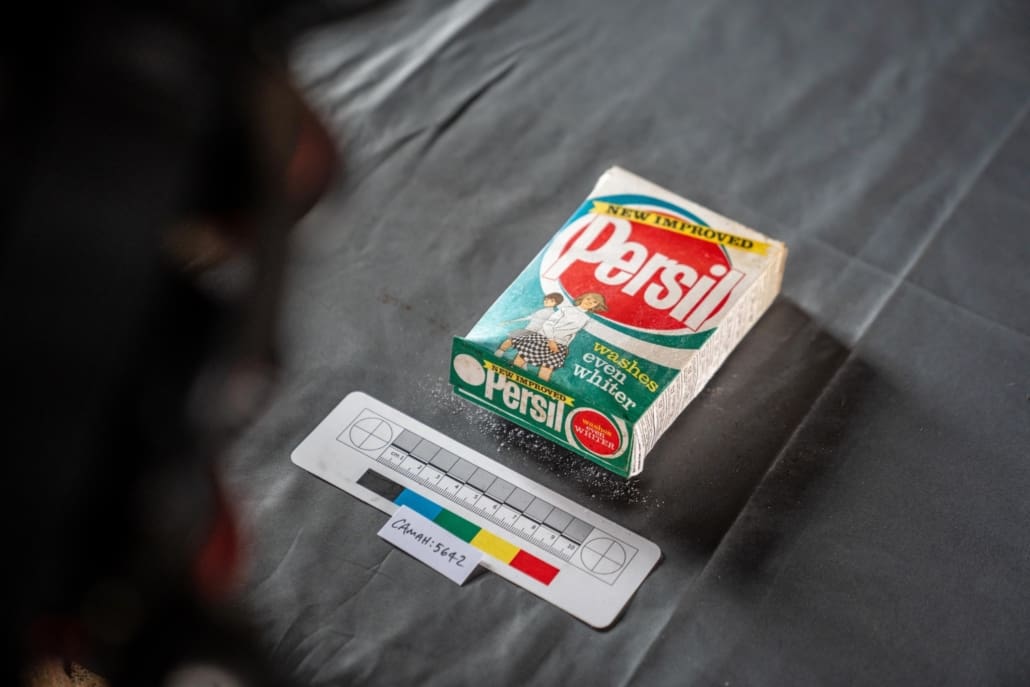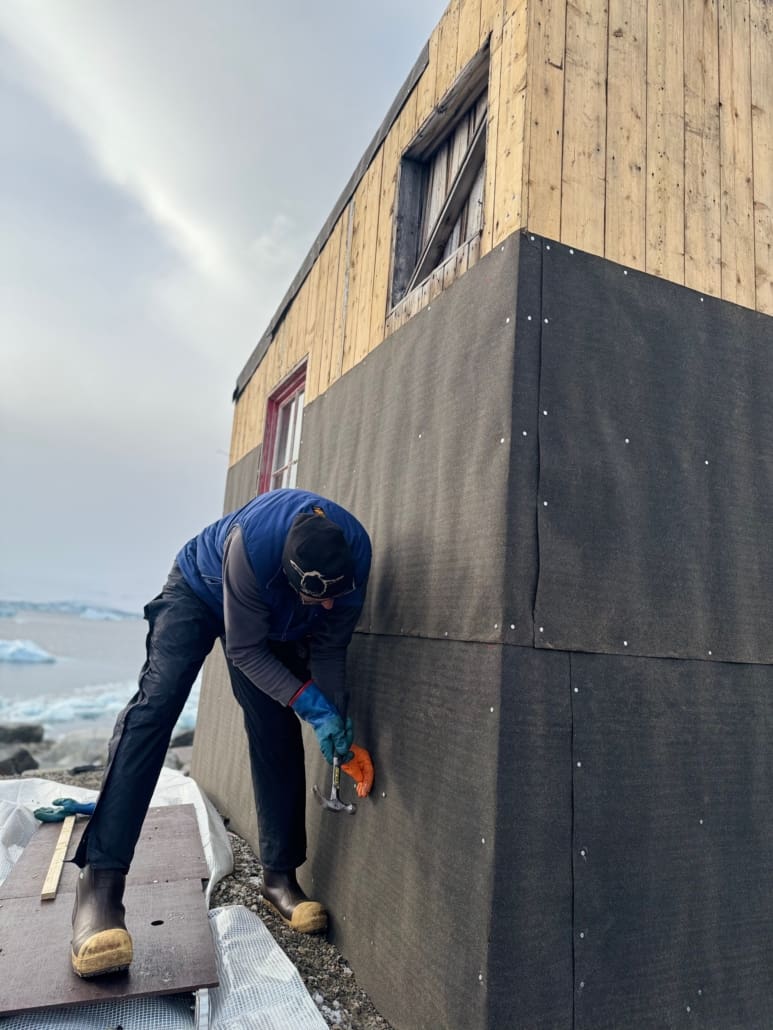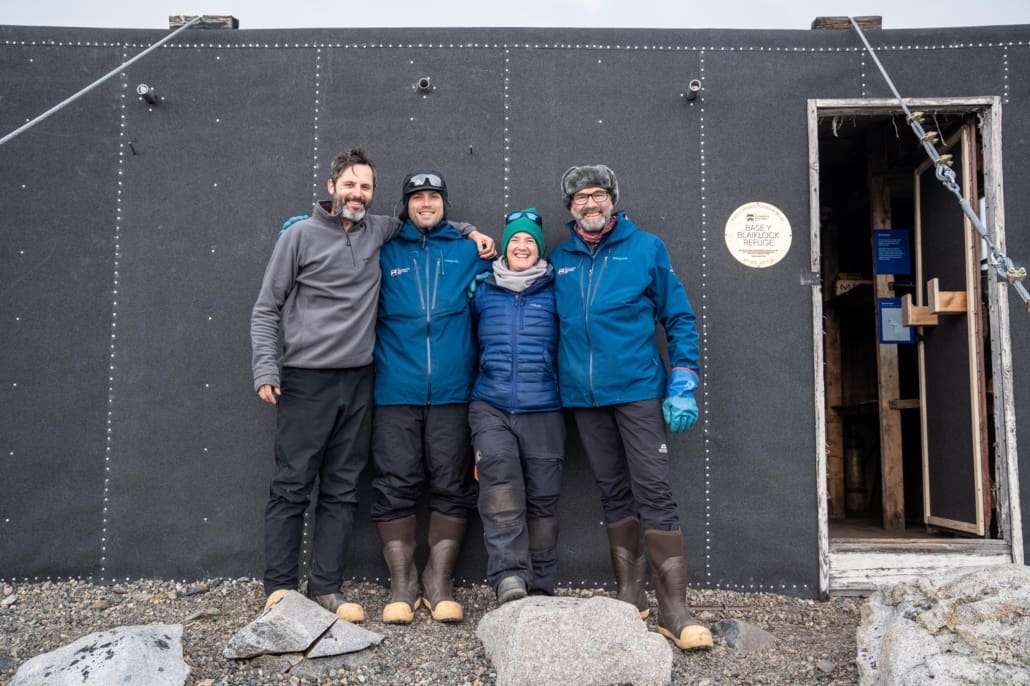Success for Remote Conservation Project
An ambitious project in a particularly challenging environment has succeeded thanks to the long-term partnership between two organisations on opposite sides of the globe. The UK Antarctic Heritage Trust conservation work on a building in a remote part of the Antarctic Peninsula included careful and detailed logistics, with help from its sister trust in New Zealand.
Blaiklock Island on the Antarctic Peninsula is a wild rocky site, acknowledged as one of the most remote places on earth and notoriously difficult to access. It is home to a building which has withstood Antarctic conditions since 1957, built to offer shelter to pioneers who mapped the area, and the last of its kind still standing.
Trust Heritage Manager Lizzie Meek travelled from Christchurch, New Zealand, to join a small team of heritage experts with two main goals – to weatherproof the building, and gather information about its condition and future conservation needs.
“Our long journey to Blaiklock was delayed four days by weather and challenging ice, which highlighted to me the amazing journeys pioneers had made in the 1950s to 1970s,” she says. “In those days, sleds and dog teams crossed miles of sea ice just to reach the island, in itself dangerous to say the least – and that was before they began to negotiate and chart glaciers and mountains.
“Even finding the refuge was a challenge for us. It was tricky to find, because it was not where maps indicated it would be and was a black building in a black landscape. It was a good feeling to finally get there and set up to do our work.”
Logistics evaluation ruled out living on the island so an unusual solution was found.
“We were based on a Quixote Expeditions support vessel whose very experienced crew could monitor and negotiate the weather and ice as it changed. That allowed us to focus on our tasks during a timeframe shortened by the weather delay. Typically working 12 hours a day, we spent almost three weeks completing our conservation programme on Blaiklock Island. The vessel was moored down the coast at the nearest safe anchorage. Getting to the worksite was a half-hour journey in a small inflatable motorised boat, finding a way to shore through the floating chunks of ice. On the days we couldn’t land close to the hut, we had a long walk, carrying lots of gear along a sandy beach. It was by turns exciting and exhausting, negotiating the changing conditions and their impact on our plans each day. “
However, Lizzie says the location more than made up for the challenges.
“We were working in a very beautiful location on the coast amongst fjords and mountains, with about 30 penguins for constant companions, and seals and whales nearby. We had good light to work in and were sheltered from severe storms.”
Though the refuge hut was found to be drier than the conservation team had expected, significant repairs were required. Some of the old cladding felt protecting the building from snow and wind-borne ice abrasion had come away and exposed the timber, so the felt was repaired for the first time in a couple of decades, and secured by more than 3000 nails. Wooden window and door surrounds were repaired and essential wire rope rigging was replaced and secured to hold the building in place.
Lizzie’s main task was to assess the building’s artefact collection, catalogue the items, noting their condition and any hazards.
“I worked my way through about 1500 items including tools, food, cooking equipment and lots of books and magazines. There were no sleeping bags or clothes in the refuge, which suggests the teams took them away with them when they left.
“It is a cosy little hut with six bunks in it and reminded me of a New Zealand hiking hut.”
Lizzie described some of the more unique objects she noted during the cataloguing:
“The dog sledging teams were based at either Horseshoe, Detaille or Stonington, and each dog team had its own unique name. In the workshop I found a wooden box with painted labels on it for the ‘Vikings’. It would have held all the cooking equipment for the sledge pulled by that dog team.”
“I also found a handmade bread board with ‘Blaiklock Bread Board’ painted onto it in beautiful 1950s lettering, and crates which had been turned into seating, with little messages written on them. All of these items gave an insight into how teams sheltering in the refuge lived there.”
Lizzie said a highlight of her time on Blaiklock Island occurred one evening, when the team made video contact from the support vessel, with a man who had spent time there decades earlier.
“Malcolm is in his 90s and was celebrating a birthday with his family, so they were all on the call,” she says. “We showed Malcolm the landscape, fjord and bay he was so familiar with, and explained what we were doing there. He understood it all, had a good sense of humour and shared stories of his sledging journeys and field trips when he was in his early 20s.”
Records made by the project team are now with the UK Antarctic Heritage Trust. The information will help the UKAHT prioritise and plan its future conservation work at Blaiklock and the other Antarctic Peninsula heritage sites it cares for.
“The Blaiklock Refuge is much more stable now, but will continue to be monitored by UKAHT,” Lizzie explains. “Blaiklock and Stonington are difficult sites to get to, but occasional local science groups, or tour ships or military visitors can provide additional updates to UKAHT in between their visits.
“I was pleasantly surprised by the condition of the building. The work we did re-cladding it will keep most moisture out, and other factors which reduce damp in the building are that the hut does not get snow-drifted much, and the site is dried by a lot of wind.”
Lizzie describes the whole experience as “an absolute delight”.
“It is such a privilege to go into that environment for work reasons and spend time immersed in it,” she says. “The project was very successful and highly enjoyable. Our team brought together a collection of skills. We are people who thrive in adversity – specialists doing specialised work and trusting each other to do what we were there to do.
“We had several multi-lingual conversations, reflecting our nationalities, and picked up phrases from each other so found ourselves laughing at jokes in a language not our own.
“The crew from the vessel and the filmmaker gathering material to share the conservation project were also willing to help when we needed them. It was a great example of what it takes to conserve historic items in special places.”

